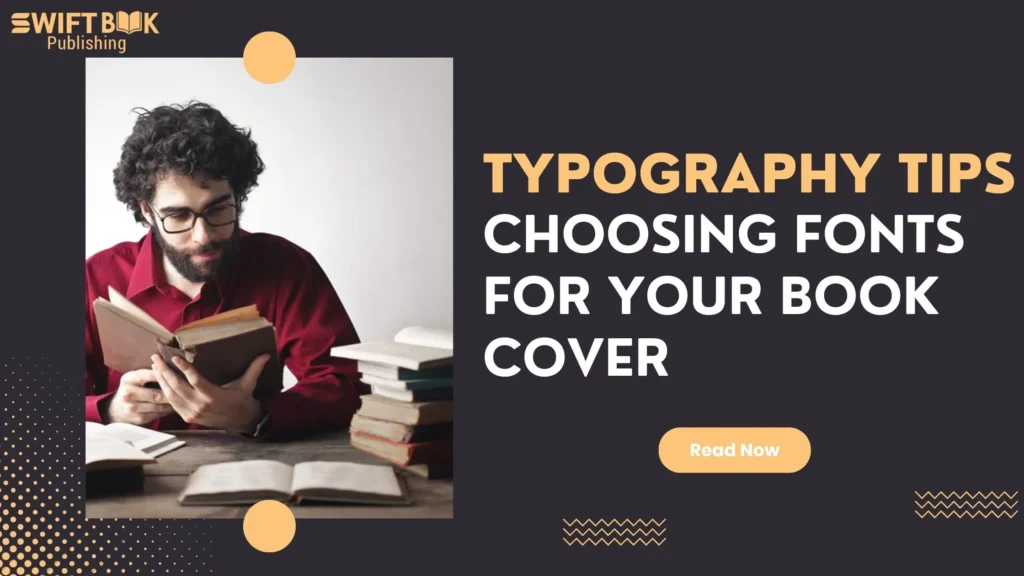Your book might be brilliant, but if the cover screams “made in Word 2007,” chances are readers will scroll right past it. Harsh? Maybe. True? Absolutely. That’s why book typography tips matter more than most authors realise. Fonts do more than spell out your title. They set the tone, shape the vibe, and can even hint at the genre before someone reads a single word.
So, whether you’re gearing up for a virtual book launch, building your book media kit, or fine-tuning your final design, let’s talk about the role of typography and how to choose fonts that pull their weight on your book’s cover.
Why Fonts Matter (Like, Really Matter)
First impressions count. And when it comes to book covers, fonts are the first thing readers notice. Typography tells us if a book is a horror, romance, thriller, or quirky memoir. It subtly shapes expectations and influences buying decisions.
Ever seen a rom-com title in all-caps gothic serif? Doesn’t quite land, right? That mismatch can cost you clicks, sales, and credibility. That’s where book cover design services come in handy. They know the visual grammar of each genre, so you don’t have to second-guess your font choices.
Font Personality: What Is Your Book Saying?
Your font choice should reflect the tone and message of your book. Here’s a quick breakdown of how font styles match different vibes:
- Serif Fonts (like Garamond or Baskerville): Traditional, reliable, great for historical fiction or literary non-fiction.
- Sans Serif Fonts (like Helvetica or Futura): Modern, clean, often used in business books or contemporary genres.
- Script Fonts (like Allura or Pacifico): Elegant or whimsical, works well in romance and poetry, but easy to overdo.
- Display Fonts: Unique, bold, and eye-catching, perfect for titles that need punch, especially in thrillers or sci-fi.
Your genre already comes with certain expectations. A fantasy novel? Probably needs something dramatic and serif-based. A self-help book? Cleaner lines and clarity win.
Fonts tell a story before the blurb even begins. This is especially important when planning your KDP Select vs wide distribution strategy, as different platforms showcase thumbnails in different sizes, so readability is key.
Genre and Font: What Works Together?
When it comes to book formats for genres, typography plays a vital role. Here are a few pairings that readers expect to see:
- Romance: Flowing scripts, soft curves, thick emotion and elegance.
- Thriller/Crime: Bold, sans-serif fonts that signal tension or urgency.
- Fantasy: Serif or decorative fonts with a bit of magic baked in.
- Business/Non-fiction: Clean, minimal fonts that suggest authority.
Stray too far from the expected and your book might confuse readers. Want to break the rules? Go for it, but only if you know what you’re doing (or if you’re working with a designer who does).
Design Dos and Don’ts for Font Choices
Here’s where it gets practical. Keep these pointers in mind when applying typography to your book cover:
Do:
- Use two fonts max – One for the title, one for the subtitle or author name.
- Test it small – Your cover needs to look good as a thumbnail, too.
- Check contrast – Make sure text stands out from your background.
- Stay consistent with your brand – Especially if you’re launching a series or already building an audience on Goodreads for authors.
Don’t:
- Overload with swirly, unreadable script fonts.
- Use default fonts like Comic Sans or Papyrus (ever).
- Let style overpower substance. Clarity always wins.
Bonus Tips for the DIY Crowd
If you’re designing your cover yourself, maybe through Canva or Affinity, these quick tips will help:
- Pair a strong title font with a simpler author name font.
- Align elements carefully, don’t just eyeball it.
- Stick to high-res images and vector fonts (especially if planning print).
- Export versions for both eBook and print, because yes, eBook cover design vs print cover is a real thing.
Designing for eBooks often means brighter colours and bigger fonts that pop on screens, while print requires precision in bleed, spine width, and CMYK colour settings.
When to Get a Pro Involved
If this all sounds like too much, or if your goal is to hit bestseller status on your first try, this is where book cover design services come in. They don’t just pick fonts. They design covers that sell. From spacing and kerning to matching your book promotional video branding, they’ll take care of the details.
This is particularly important if you’re also managing pricing for self-published book strategies or have limited time due to other launches or translations.
Remember, working with pros can free up time to focus on the actual writing or polishing your query letter for the next big project.
Final Note
Typography isn’t just decoration. It’s communication. And when done right, it can help attract the right readers, build your author brand, and make your book stand out in an overcrowded market.
From preparing your book translation publishing rollout to tweaking the blurb, it’s all connected. Font choice might seem like a small decision, but it’s one that impacts every part of your book’s presentation.
So, take the time to get it right. Or better yet, hand it off to someone who knows exactly how to make your title pop.
And if you’re stuck between copy editing vs proofreading, juggling ghostwriting ethics, or trying to prepare a manuscript for an audiobook, remember: your typography deserves as much care as your text. Because first impressions? They start with the cover.







